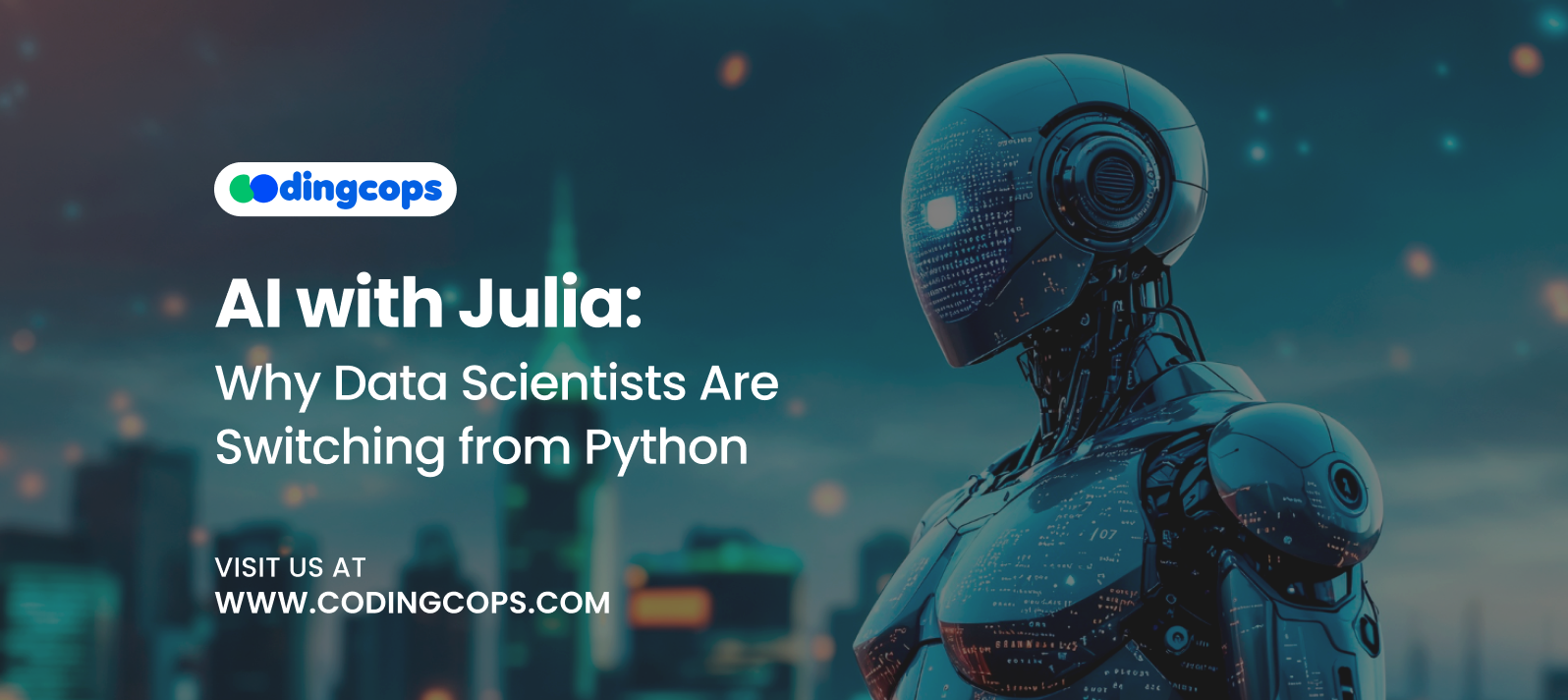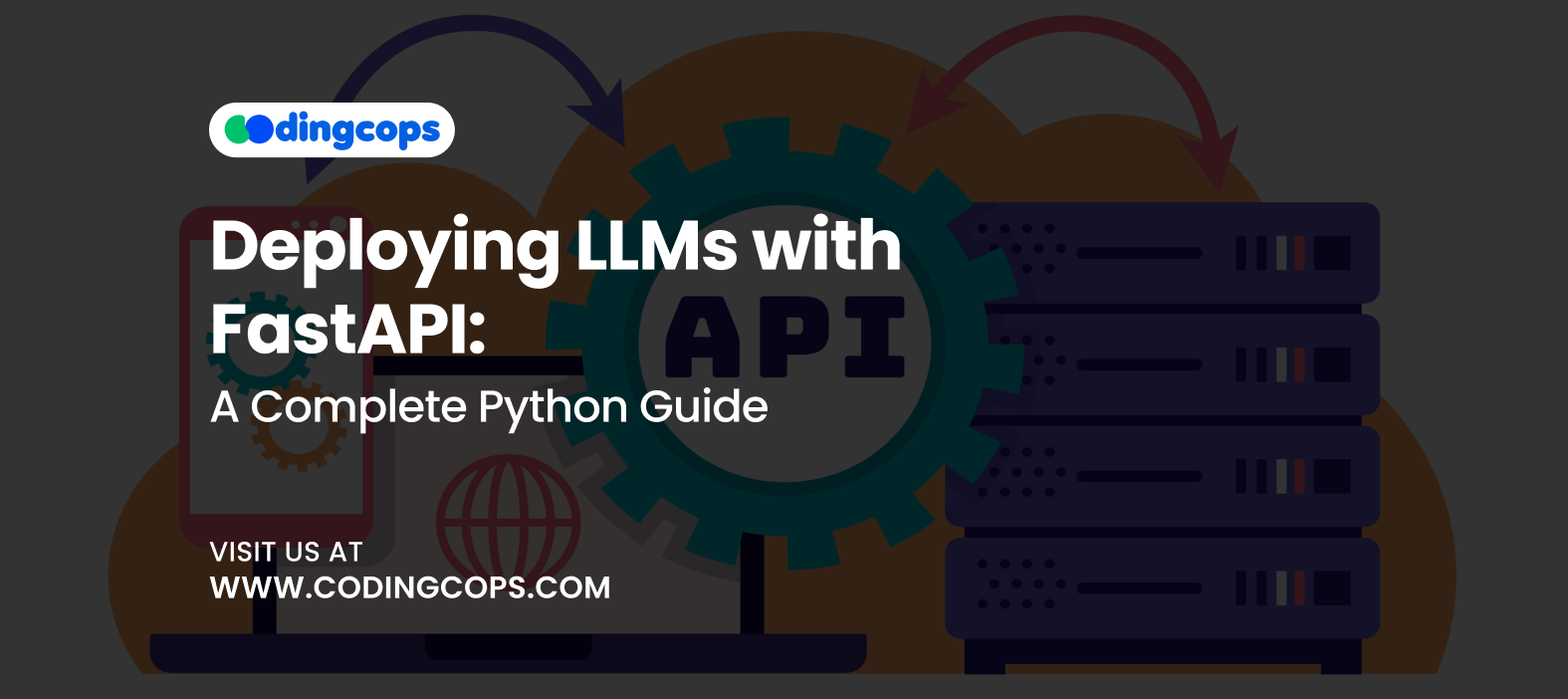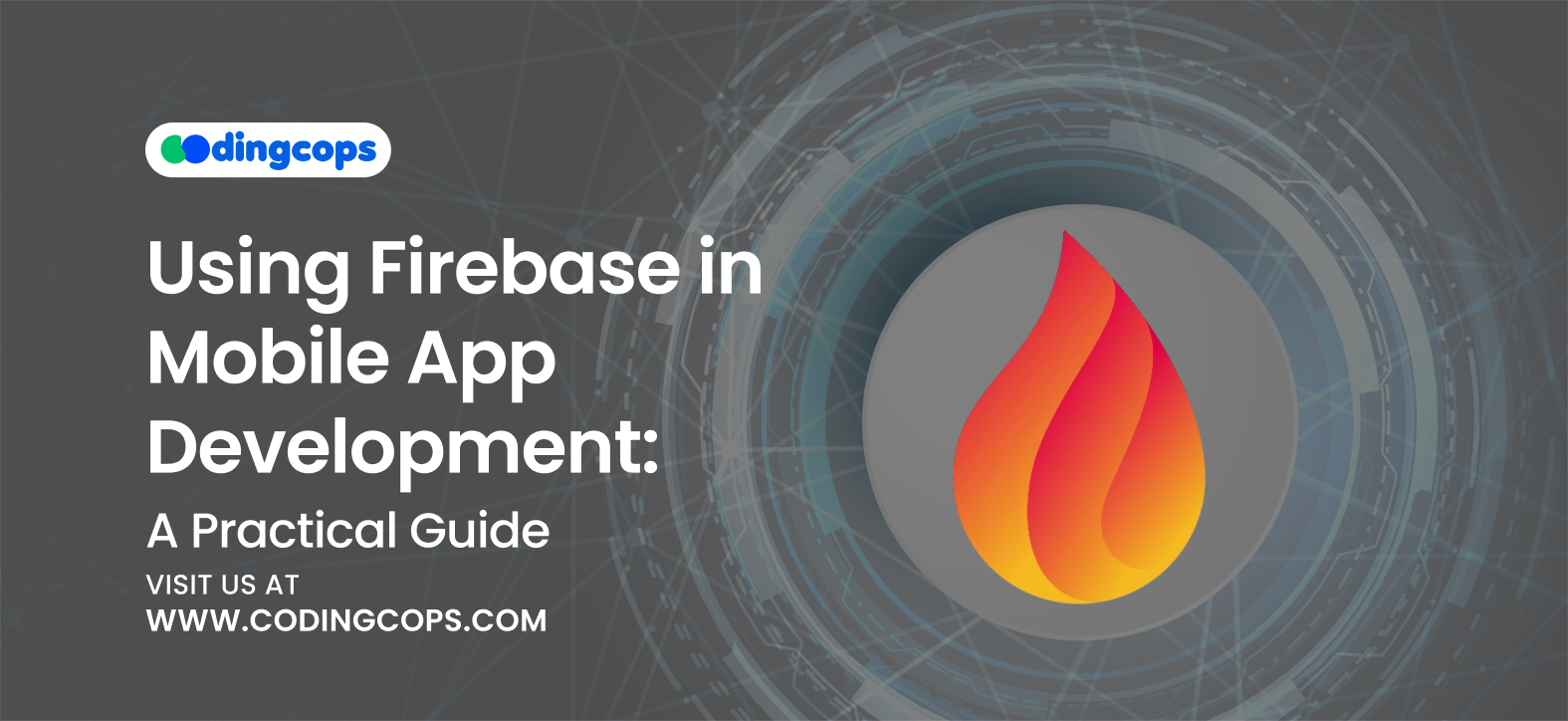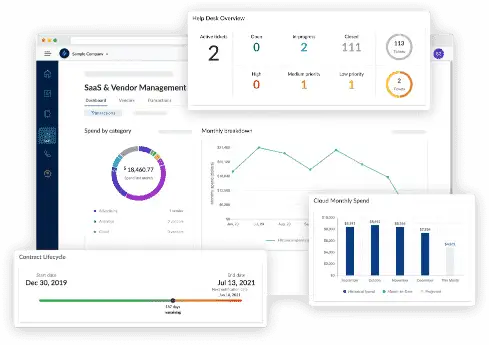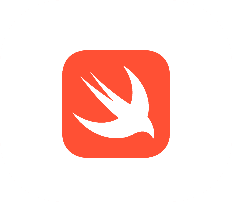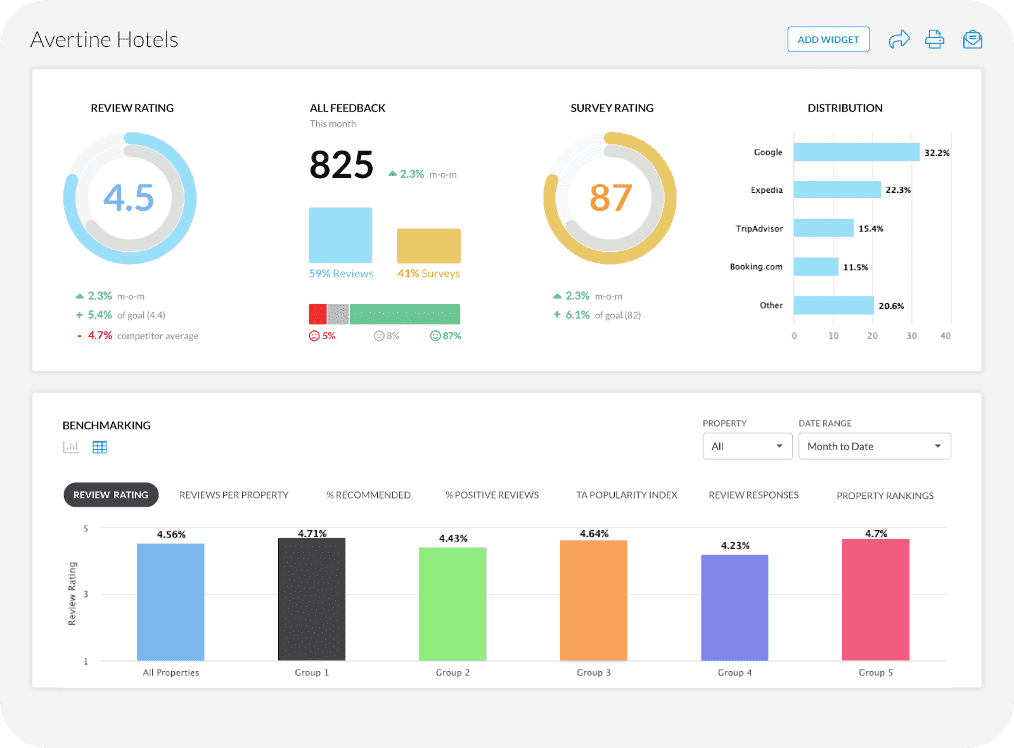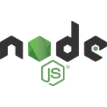Python has dominated the AI and machine learning environment for more than ten years. Its strong libraries and simple syntax also make it the language of choice for AI engineers. But as AI models become larger and data pipelines become more complex, Python’s limitations become more noticeable.
This is where Julia can help. It’s a relatively young programming language that is starting to attract serious attention from the AI community. In fact, Julia now has over 20 million package download requests per month. Julia claims to provide a strong framework for creating scalable and performance driven AI solutions by fusing the simplicity of Python with the speed of C.
This guide will explain what Julia is, why it’s becoming more and more popular in AI development, and how it stacks up against Python.
What is Julia?
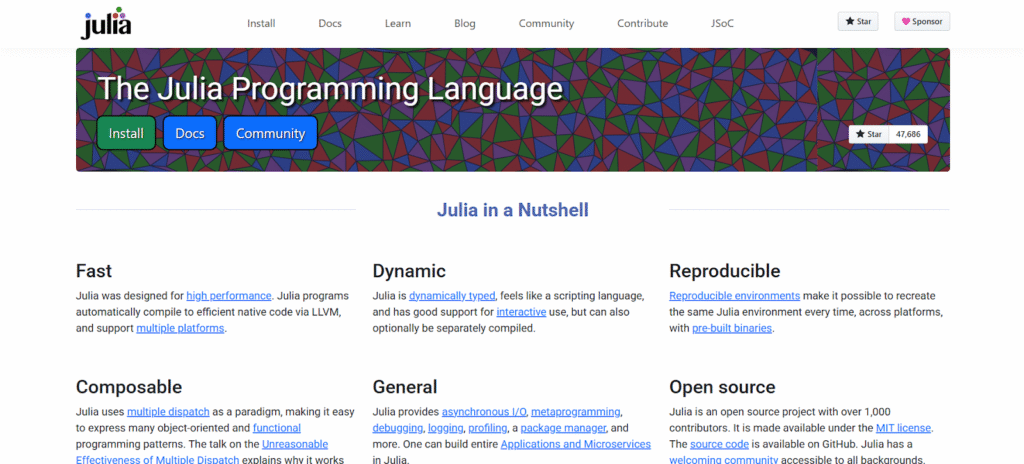
Julia is a dynamic, high level programming language designed specifically to handle the particular difficulties encountered in data analysis and scientific computing. It was initially made available in 2012 with the goal of fusing the greatest aspects of MATLAB and Python without any of their drawbacks.
Characteristics of Julia
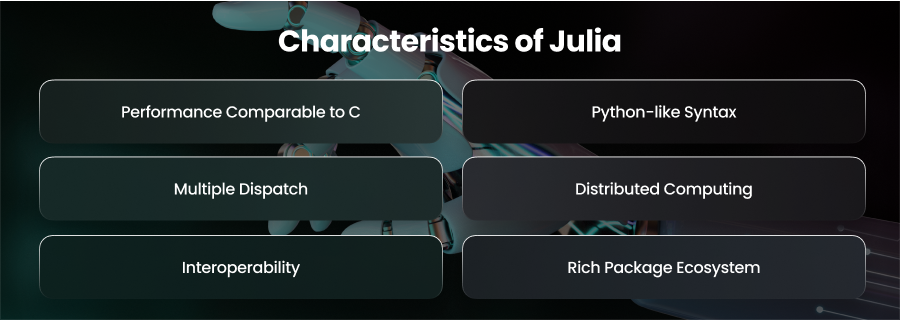
Performance Comparable to C
Julia compiles directly to efficient machine code using LLVM. This suggests that computationally intensive jobs might be finished with performance on par with two languages often used for high speed computing, C and Fortran.
Python-like Syntax
Julia is easy to read regardless of how it is performed. Data scientists and researchers may use it without having to understand the fundamentals of programming because of its syntax, which is well known to Python users.
Multiple Dispatch
One of Julia’s more creative features is multiple dispatch. This feature allows functions to react differently depending on the kind of inputs they receive. Consequently, this offers a great deal of freedom when creating AI algorithms that manage different data types.
Distributed Computing
Julia comes with built-in functionality for distributed computing and multi threading. Julia incorporates parallel processing natively, unlike Python, which needs add ons like Dask or MPI. This makes it a natural fit for large scale AI tasks.
Interoperability
Julia can call C and R libraries without major overhead. For example, developers may access well-known Python libraries like TensorFlow or NumPy from within Julia by using PyCall. Because of this, teams may more easily use Julia gradually as opposed to changing their entire stack.
Rich Package Ecosystem
While smaller than Python’s, Julia’s ecosystem is growing quickly. Moreover, libraries like Flux and DataFrames provide strong foundations for AI development.
Why Use Julia for AI Development?
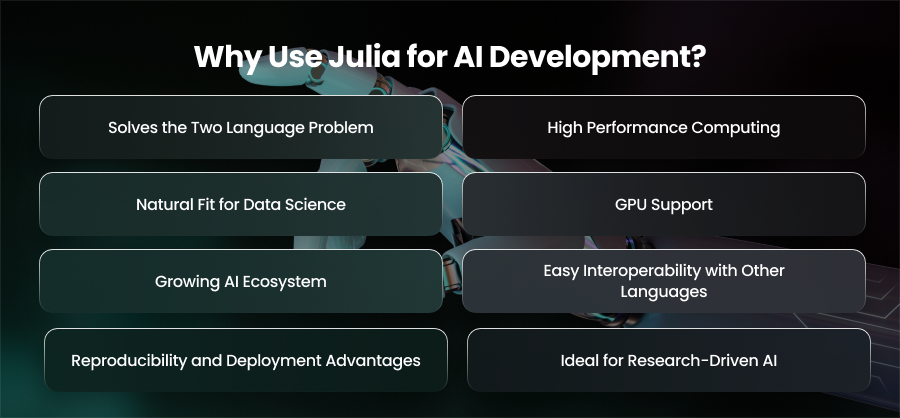
Solves the Two Language Problem
Many AI projects start with a short Python or R prototype, but for performance, developers subsequently rewrite important portions in C++ or CUDA. Development is slowed down and inconsistencies are introduced by this method. Also, Julia eliminates this issue by allowing researchers to both prototype and scale within the same language. This seamless transition speeds up research and reduces maintenance overhead.
High Performance Computing
AI models are computationally expensive. So, Julia’s JIT compilation via LLVM means it executes at near native machine speed without needing external optimizations. This makes Julia ideal for:
Training large scale neural networks.
Running real time inference in production.
Performing resource intensive simulations in areas like robotics.
Natural Fit for Data Science
Julia’s syntax, designed to mimic mathematical notation, will be particularly useful to researchers exploring artificial intelligence. For example, it is possible to represent probability distributions and matrix multiplications in a manner that approximates equations in academic literature. Julia is therefore a strong language for connecting research with real-world AI applications.
GPU Support
Parallelism is necessary for modern AI, particularly when training models on several CPUs and GPUs. Julia comes with built in capability for distributed and parallel processing, unlike Python, which often requires additional libraries like Ray. Furthermore, direct programming on GPUs is made possible by packages like AMDGPU, which eliminate the need to exit Julia’s environment.
Growing AI Ecosystem
Altough Python still leads in the number of libraries, Julia’s AI ecosystem is growing rapidly:
Flux: It’s a deep learning library fully writing in Julia.
Knet: It’s a GPU based deep learning framework.
MLJ: A machine learning framework that unifies algorithms from multiple packages under a single interface.
DataFrames: It’s used for data manipulation, similar to Pandas in Python.
Easy Interoperability with Other Languages
Switching to Julia doesn’t mean abandoning existing workflows. Julia can seamlessly call Python libraries using PyCall. This means data scientists can still utilize TensorFlow where needed. Also, Julia can also integrate with R and Fortran, making it easier for teams to adopt Julia incrementally.
Reproducibility and Deployment Advantages
AI projects often suffer from dependency conflicts and environment issues. Also, Julia’s package manager provides reproducible environments by recording exact dependency versions. This ensures consistency across research and production environments. This is particularly valuable in AI, where even minor changes in libraries can alter experimental results.
Ideal for Research-Driven AI
Many of Julia’s early users are in academia and scientific research. Julia offers a better trade-off between speed and flexibility than Python for research driven AI domains including scientific simulations, natural language processing, and reinforcement learning.
What Are the Advantages of Julia Over Python for AI Development?
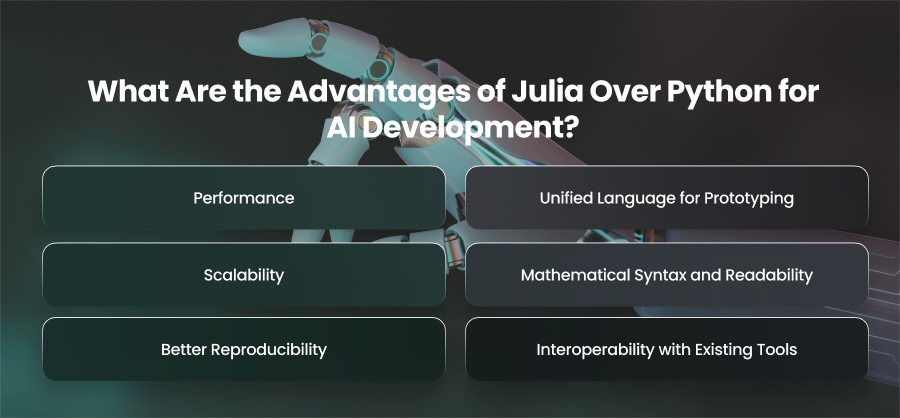
Performance
One of Julia’s biggest advantages over Python is its speed. Julia can run code at nearly native machine speed because of its usage of JIT compilation using LLVM. Julia can provide raw computing power without compromising coding simplicity, in contrast to Python, which is interpreted and frequently depends on extra CUDA libraries to obtain acceptable performance. As a result, Julia is especially well-suited for jobs like processing large datasets and building deep learning models. In practice, Julia can perform many times faster than Python on jobs involving a lot of calculation. This gives data scientists the ability to run experiments faster and reduce infrastructure costs significantly.
Unified Language for Prototyping
AI development often suffers from the two language problem. Researchers typically build prototypes in Python due to its simplicity, but performance-critical parts of the system are then written in CUDA for production. This workflow introduces delays and creates potential inconsistencies between the research code and deployed code. Julia eliminates this issue by allowing developers to prototype and deploy in the same language. The whole AI development lifecycle may be accelerated by immediately scaling models created in Julia for production use. This unification can make the difference between months of additional effort and a seamless idea-to-implementation process for research teams and companies.
Scalability
Julia is also very good at distributed and parallel computing. Python offers parallelism with libraries like Dask and Ray; however, they are additional add-ons that complicate programs rather than being built-in features. In contrast, Julia was created with parallel processing and scalability in mind. Developers may spread their work across many cores or even entire clusters with little setup. Additionally, direct GPU programming without a language change is made possible by packages in Julia’s ecosystem. Because of its scalability, Julia is a great option for challenging AI jobs in industries like healthcare, where a lot of computations and simulations are common.
Mathematical Syntax and Readability
AI is fundamentally mathematical. Therefore, Julia’s syntax is designed to resemble mathematical notation. This makes it much easier for researchers to convert theoretical equations into working code. For example, matrix multiplications and statistical models can be expressed almost exactly as they would appear in an academic paper.
Python often requires verbose or function heavy expressions to achieve the same result, which can obscure the intent of the code. Julia’s math friendly design not only improves readability but also reduces the risk of implementation errors.
Better Reproducibility
Different library versions and dependencies might provide inconsistent results, making reproducibility a major difficulty in AI efforts. To ensure consistency between projects, Python developers frequently struggle with virtual environments and dependency management. Julia’s built-in Pkg.jl package management takes care of this by keeping track of precise versions of all dependencies so that environments may be precisely rebuilt. Because of this, teams and researchers may share their work and duplicate studies more easily without fear of dependence hell.
Interoperability with Existing Tools
Julia is highly interoperability with Python, which makes it easier for organizations to transition gradually. With PyCall, developers can directly call Python libraries like sci-kit learn. Teams may now take use of the greatest features of both ecosystems. Julia is a good choice for high speed computing settings since it also works well with Fortran. This interoperability ensures that Julia adoption can be evolutionary. This reduces the risk of switching and makes it practical for real world AI projects.
What Are the Challenges in Julia Adoption?
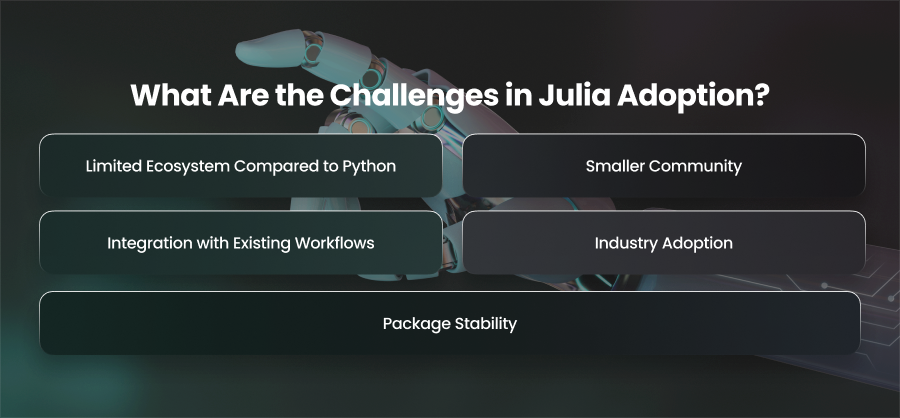
Limited Ecosystem Compared to Python
Python has a massive collection of libraries and tools built specifically for AI and machine learning. Julia’s ecosystem is still relatively young. Although libraries like Flux and Knet exist, the lack the depth and breadth of Python counterparts like PyTorch. Developers working with Julia may find themselves building custom solutions for tasks that Python already solves with mature and well-tested tools.
Smaller Community
Adoption of any programming language depends heavily on community support. Python has a large international community, which makes it simple to locate answers and lessons on sites like Stack Overflow. However, Julia’s user base is far smaller. Its limited size means that there are fewer tutorials and pre-made examples, even if its community is active and involved.
New users of Julia often face a high learning curve since they may not be able to get answers immediately or may need to rely on smaller community forums for help. This lack of widespread support might be problematic for companies that depend on timely onboarding and training.
Integration with Existing Workflows
Most businesses an research labs already have AI pipelines built on Python. Transitioning to Julia requires rethinking parts of these workflows and model training. While Julia offers interoperability with Python and other languages, this adds complexity rather than fully eliminating it. Teams must decide whether the performance benefits of Julia outweigh the cost of adjusting existing infrastructure.
Industry Adoption
Python dominates enterprise AI projects. Julia remains niche, with adoption concentrated in academia and certain performance critical industries. There are therefore fewer Julia employment possibilities for developers and fewer experienced Julia developers available for hiring by companies as a result of this restricted industrial use. Because there is a smaller skill pool than Python’s large developer community, companies that use Julia may also have trouble finding qualified candidates.
Package Stability
As Julia’s ecosystem is still developing, some libraries and packages are not as stable or backward compatible as Python’s well established frameworks. A developer may encounter breaking changes between package versions or incomplete documentation for newer tools. Frustration and lost troubleshooting time may result from this. This immaturity may provide hazards for manufacturing systems. Python’s maturity provides a safety net that Julia has yet to fully replicate.
Final Words
Julia’s unparalleled speed makes it a potent substitute for Python in AI development. Its promise is clear despite obstacles like limited adoption and ecosystem maturity. Therefore, forward looking teams embracing Julia can gain a competitive advantage.

